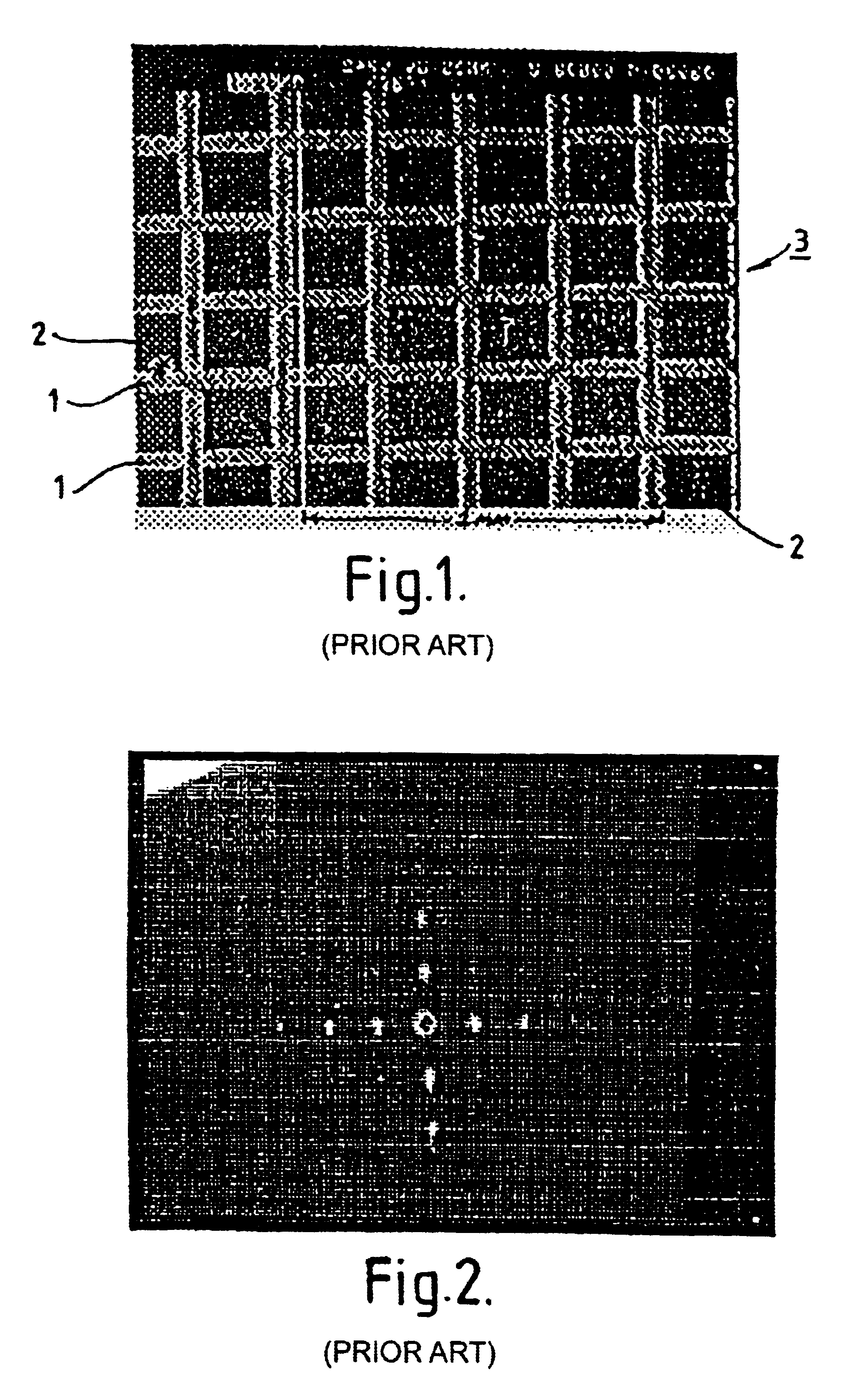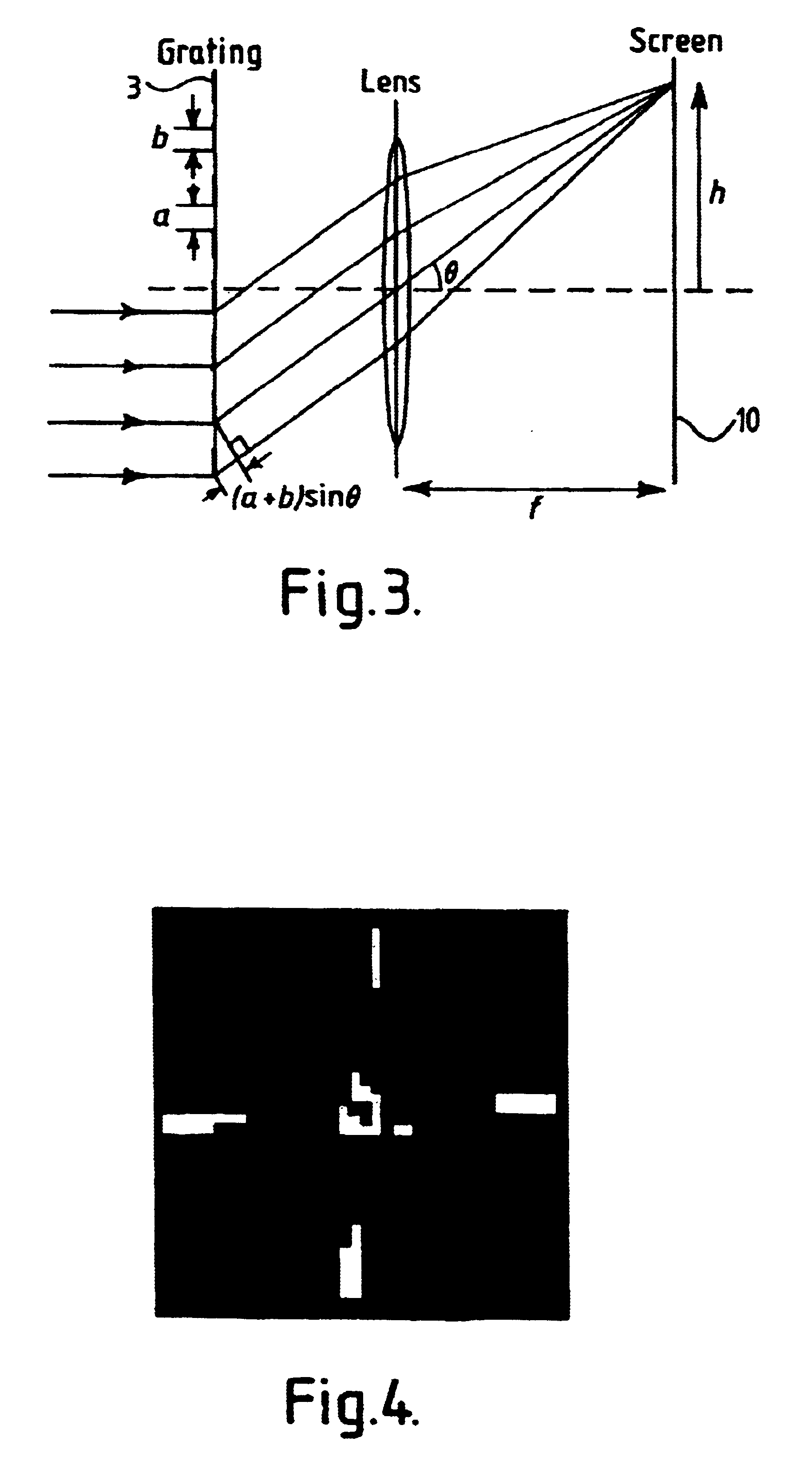Image processing system and method for removing or compensating for diffraction spots
a technology of image processing and spot detection, applied in the direction of direction finders using electromagnetic waves, photometry, direction finders, etc., can solve the problems of false target detection, increased noise, and false spot detection
- Summary
- Abstract
- Description
- Claims
- Application Information
AI Technical Summary
Benefits of technology
Problems solved by technology
Method used
Image
Examples
Embodiment Construction
As shown in FIG. 1, a conventional optical window 3 includes a regular conductive mesh formed by a number of parallel and perpendicularly extending linear conductors 1 formed on an optically transparent substrate 2.
As shown in FIG. 2, when an intense source of radiation is incident upon the optical window, the grid acts as a two-dimensional diffraction grating, and accordingly, in addition to the actual image of the source of radiation, a number of false images will be observed. These will be in a two-dimensional pattern with respect to the real image.
According to one example of the present invention, as shown schematically in FIG. 3, a charge coupled device 10 is provided behind the optical window 3. When a source emits radiation which is incident on the optical window 3, the radiation is transmitted through the window producing a real image on the charge coupled device 10 corresponding to the source of radiation, and a number of false images due to the diffraction effect of the me...
PUM
 Login to View More
Login to View More Abstract
Description
Claims
Application Information
 Login to View More
Login to View More - R&D
- Intellectual Property
- Life Sciences
- Materials
- Tech Scout
- Unparalleled Data Quality
- Higher Quality Content
- 60% Fewer Hallucinations
Browse by: Latest US Patents, China's latest patents, Technical Efficacy Thesaurus, Application Domain, Technology Topic, Popular Technical Reports.
© 2025 PatSnap. All rights reserved.Legal|Privacy policy|Modern Slavery Act Transparency Statement|Sitemap|About US| Contact US: help@patsnap.com



